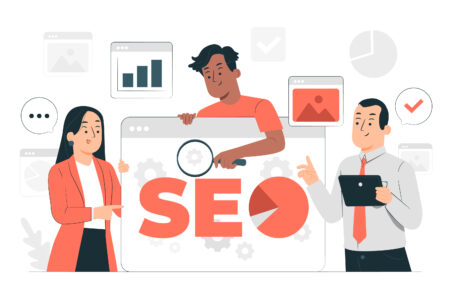5 minutes read

If you are familiar with how Google works, you know that it crawls text that is on a page to determine its relevance. Based on the written content on a page, Google determines the information it offers and for which search queries it can appear. This is one of the core concepts behind creating search optimised online content. However, this begs the question: what about pictures? Is there any way to optimise images for search as well? The short answer is – YES! Here are a few nifty tricks you can do to optimise pictures on your website to help your ongoing SEO campaign.
Name Your images
Perhaps the simplest way you can optimise your site images is by naming them. If you are running an e-commerce website with hundreds of product images, naming the images by their corresponding product can help boost your SEO. Do not fall into the trap of settling for the default names automatically generated by the camera for each image. Take the time to rename each image with the name of the product it is portraying. One of the core foundations of SEO is using select keywords to help improve the performance of a page in terms of rankings. Integrating keywords into the filenames of images allows search engines to crawl the file names of the images along with the text on the page.
If you are unsure of how to name your images, you can look at competitor images and the phrasing patterns of their web images. Adopt a similar strategy for your own naming process, but be careful not to COPY the exact phrases they use.
Optimize Your Alt Tags
In cases where search engines cannot render images, alt tags are used as an alternative to text for images. And even if an image has been rendered properly, placing your mouse pointer over an image can still reveal the alt tag that has been created specifically for it. Aside from helping with the rendering, alt tags can also be used to help search engines correlate images with specific key words or phrases, which helps massively in the SEO campaign of a website.
One thing to remember when optimising alt tags, however, is to make sure that the descriptions are expressed plainly in the language you are targeting. If the image is for a product on your website, one helpful tip is including the serial number of the product itself. Avoid pumping alt tags with keywords you are targeting, or you risk suffering penalties from Google.
Find the Right Angles
Creating quality content has always been a priority for Google. In the same way that it stands true with written content, it also stands true with images. One of the most common practices today for marketing a product, for example, is using multiple angles and perspectives for a more complete representation. Doing this allows customers to have a more intensive understanding of the product you are selling. You can also maximise this by properly optimising the alt tag of each image.
Compress Your Images
Research has indicated that web users are only willing to wait 3 to 5 seconds for a website to load, depending on the device that they are using. Any more than that and you risk losing a user’s interest. Images are a major factor in determining load time. As such, it is important to reduce image sizes to the point where image quality and website speed are both at an acceptable level.Facebook



 5 min read
5 min read



